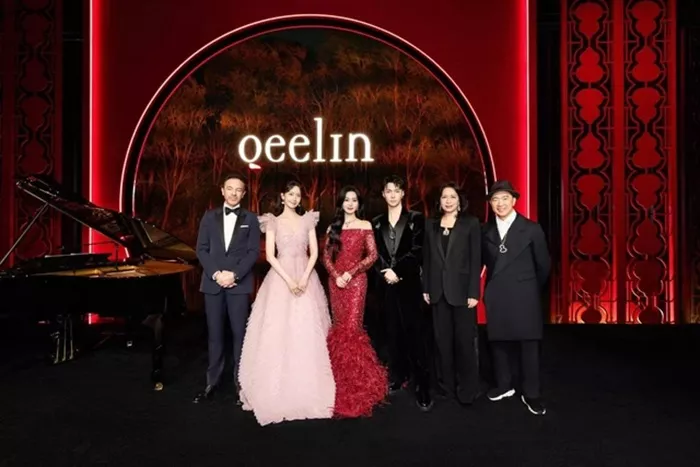Qeelin, a relatively young player in the fine jewelry world, continues to impress with its innovative designs that blend China’s rich heritage with modern luxury. The brand’s latest collection celebrates East Asian aesthetics, incorporating traditional Chinese symbols such as butterflies, goldfish, pandas, bamboos, and orchids into necklaces, earrings, bracelets, and pendants crafted from rare gemstones.
Recently, Qeelin showcased its newest creations at the Miracle Garden exhibition. The event, held at the Amanyangyun Resort on the outskirts of Shanghai, took place in a beautifully restored Ming and Qing dynasty mansion surrounded by a lush forest of camphor trees.
Expanding Creative Horizons
While staying true to its iconic motifs, Qeelin is also introducing fresh concepts in its jewelry collections. The new Wulu Diamond Lotus features an innovative gourd-shaped diamond cutting technique, while the Wulu Yulin collection draws inspiration from ancient murals in the Yulin Caves of Gansu province.
A Legacy of Blending Tradition and Modernity
For over two decades, Qeelin has stood out in the competitive luxury jewelry market by seamlessly blending traditional Chinese culture with contemporary design. The brand, founded in 2004 by designer Dennis Chan, has become a prominent storyteller of Chinese history through its unique jewelry creations.
Chan’s inspiration for the brand came from a 1997 journey along the Silk Road, where he was moved to capture the essence of China’s cultural heritage through jewelry craftsmanship. Qeelin gained global recognition in 2004 when actress Maggie Cheung wore a Wulu diamond earring at the Cannes Film Festival and won the Best Actress award.
In 2012, Qeelin joined the luxury portfolio of Kering, becoming the youngest jewelry brand in the French conglomerate. In recent years, jewelry has been a key growth segment for Kering, which saw a 12% decline in overall revenue in 2024.
Appealing to the Spirituality of Young Consumers
Qeelin’s success is not just due to its ability to combine traditional Chinese culture with modern aesthetics, but also its ability to connect with changing consumer preferences. The rise of spiritual interests among young Chinese consumers has made Qeelin’s Wulu collection, featuring the gourd — a symbol of wealth and prosperity — increasingly popular. The collection appeals to the growing number of young Chinese people interested in neo-Taoism, or “xuanxue,” a modern reinterpretation of classic Chinese philosophy.
A 2024 NetEase survey revealed that over 70% of young Chinese people have tried online fortune-telling, and in 2023, spending on metaphysical products exceeded 110 billion RMB ($15.2 billion). This trend reflects a broader shift in consumer sentiment, where charms, divination, and feng shui are seen not just as cultural practices, but also as sources of comfort in uncertain times. High-end jewelry brands, including Qeelin, are tapping into this by incorporating auspicious symbols and philosophies into their designs and marketing.
In summary, Qeelin has successfully built a brand that is both a keeper of Chinese heritage and a forward-thinking innovator in luxury jewelry, resonating deeply with young consumers looking for meaningful, spiritual connections in their fashion choices.
Related topics:
- LVMH Appoints Bulgari CEO Jean-Christophe Babin to Lead Watches Division
- K. Hollis Jewelers Marks 20 Years with Anniversary Celebration
- Bergman Jewelry to Close After 137 Years in Omaha


